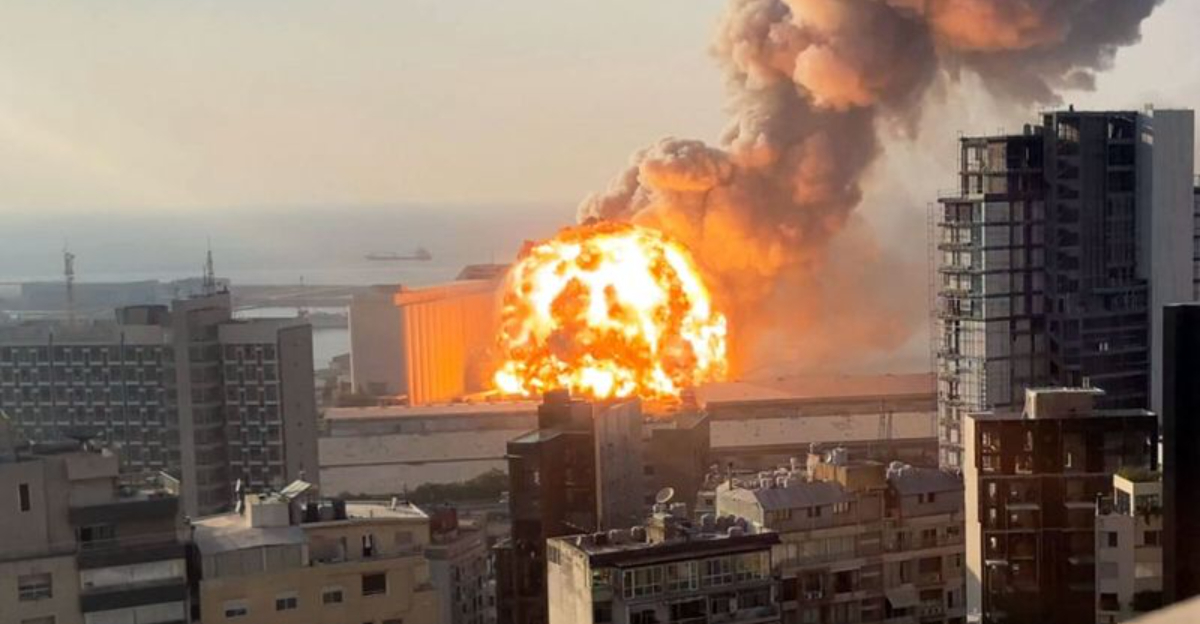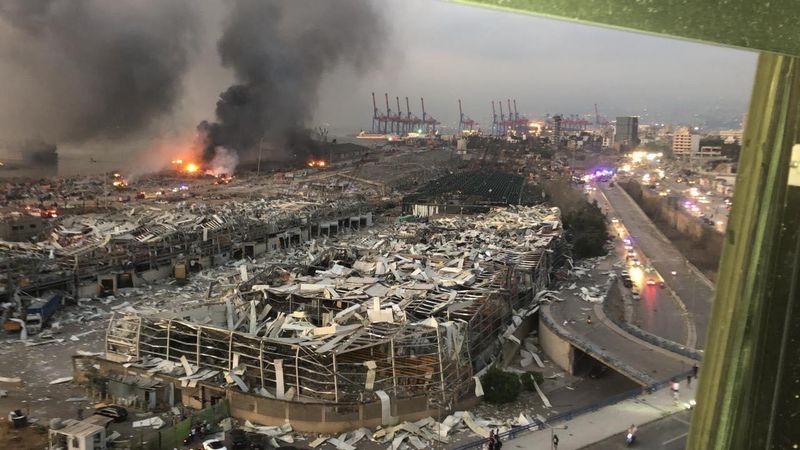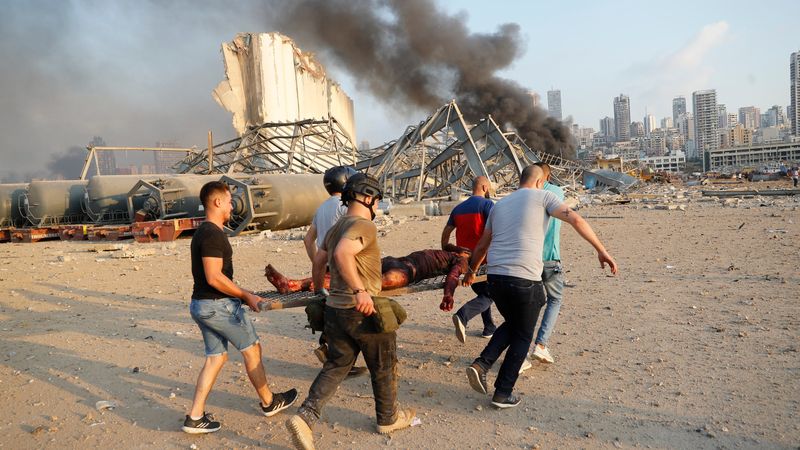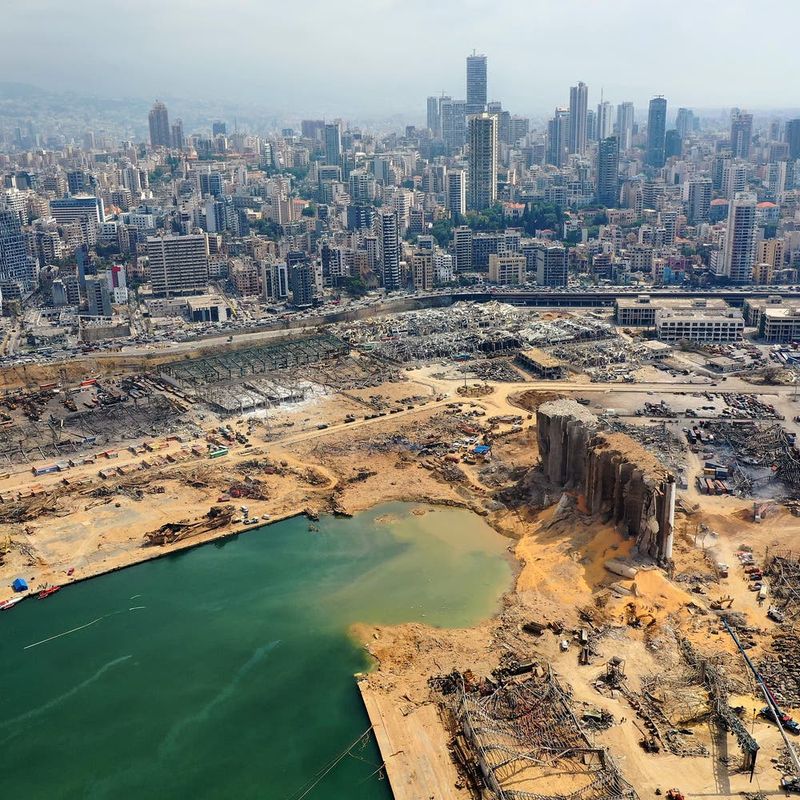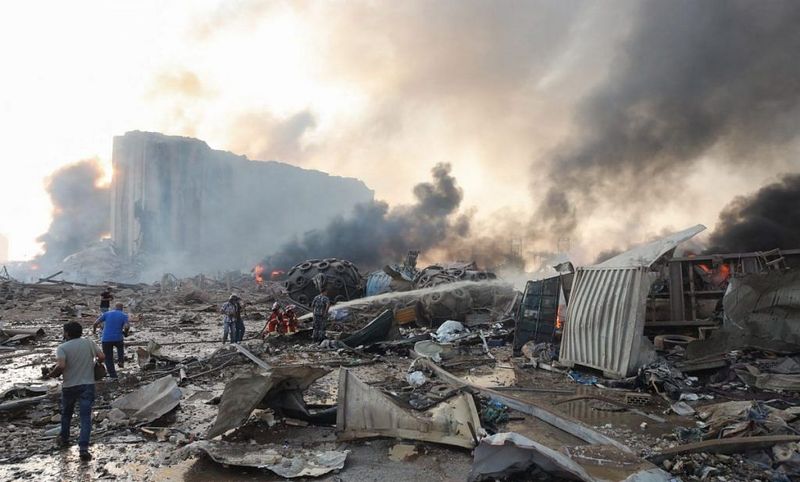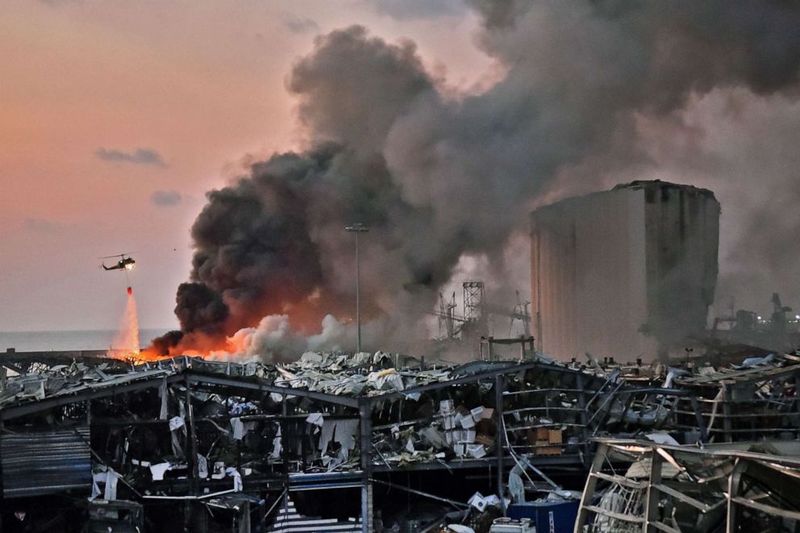The Beirut explosion was one of the most devastating and shocking events in recent history. Occurring on August 4, 2020, this tragic event was caused by the ignition of a massive stockpile of ammonium nitrate stored at the port of Beirut. The explosion led to significant loss of life, widespread injury, and extensive damage across the city, sparking outrage and protests against governmental negligence. Here are 10 facts about this catastrophic event.
1. It Was Caused by Ammonium Nitrate—Stored for Over 6 Years
A staggering 2,750 tons of ammonium nitrate, the substance used in fertilizers and explosives, sat unsecured in a warehouse at Beirut’s port since 2013. Confiscated from a ship, it was forgotten by authorities for years. The sheer neglect over such a dangerous stockpile is astounding. Warnings were ignored, and no safety measures were implemented. This negligence set the stage for disaster. The emergency was a ticking time bomb; anyone familiar with ammonium nitrate’s volatile nature would be alarmed. It’s a shocking example of bureaucratic apathy and a lack of foresight in handling hazardous materials.
2. The Explosion Was Equivalent to a Major Earthquake
The blast registered 3.3 on the Richter scale, felt far and wide. Cyprus, 240 km away, felt the tremors. Beirut itself vibrated violently, like an earthquake. Buildings shook, windows shattered, and panic ensued. Residents thought it was an earthquake, reminiscent of seismic events. The shockwaves rippled through neighborhoods, causing structural damage. Post-event analyses confirmed the magnitude, equating the explosion to an earth-shaking phenomenon. This seismic comparison highlights the explosion’s sheer power, leaving a permanent mark on Beirut’s urban fabric. It was as if nature itself unleashed its fury on an unsuspecting city.
3. One of the Largest Non-Nuclear Explosions in History
The Beirut explosion ranks as the third-largest urban explosion ever recorded, after Hiroshima and Nagasaki. Remarkably, it wasn’t a bomb or weapon but sheer negligence that led to this catastrophe. Its magnitude and impact were unprecedented in a non-war context. Comparisons to nuclear blasts underline its scale – shocking the world that such destruction could occur without warfare. Eyewitness accounts describe a scene out of a warzone, with debris scattered and buildings decimated. This fact alone emphasizes the colossal impact and underscores the critical need for safety regulations worldwide.
4. It Killed Over 200 People and Injured More Than 7,000
The human toll was devastating: 218 lives were tragically lost, and over 7,000 individuals sustained injuries. The explosion left approximately 300,000 homeless. Families were torn apart, and communities shattered. Hospitals, already under strain from the COVID-19 pandemic, faced overwhelming numbers of injured. The stories of survival and loss are heart-wrenching. Memorials sprung up across the city, honoring those who perished. The blast’s immediate impact was visible in grieving families and shocked survivors. It was a humanitarian crisis, illustrating the fragility of life under such unexpected calamities.
5. It Happened Just Minutes After a Fire Was Reported
Before the explosion, a fire ignited in the warehouse, possibly due to welding work. Chaos ensued as fireworks stored nearby ignited, escalating into a terrifying cascade. It was a scene of confusion and panic. The fire, once small, grew uncontrollable, setting off smaller explosions. Eyewitnesses recall the escalating chaos leading to the catastrophic blast. Firefighters arrived, unaware of the impending disaster. Their bravery is remembered, yet the tragedy was unavoidable. This sequence of events highlights the unpredictability of the situation and the desperate moments before the explosion.
6. A Giant Crater Was Left at Ground Zero
The explosion created a gaping crater 140 meters wide and 43 meters deep. It’s as if a meteor struck the heart of Beirut. The scale of destruction was palpable, with debris scattered for kilometers. Ground zero became a haunting reminder of the explosion’s deadly force. The crater’s size is akin to several city blocks or a football field, illustrating the blast’s immense power. Scientists and engineers were stunned by the physical transformation of the port area. This crater symbolizes the destructive capacity of negligence and the human cost of inaction.
7. Officials Ignored Warnings for Years
Multiple government agencies were warned of the ammonium nitrate’s dangers; letters, memos, even legal filings were ignored. Bureaucratic inertia prevailed, with no one claiming responsibility. This negligence is infuriating. The warnings were clear, yet inaction persisted. It was a systemic failure, highlighting flaws in governance and accountability. Whistleblowers voiced concerns, but their warnings fell on deaf ears. This lack of action demonstrates a grave oversight, ultimately culminating in disaster. The aftermath saw a desperate search for accountability in a landscape of corruption and neglect.
8. A Shockwave Flattened Entire Neighborhoods
The shockwave obliterated buildings, crushed cars, and ripped balconies off high-rises. It was a scene of utter devastation, leaving neighborhoods unrecognizable. Hospitals, already overwhelmed by COVID-19, teetered on the brink. The sheer force of the shockwave laid waste to vast urban areas, turning bustling districts into ghost towns. Survivors emerged from rubble, dazed and injured, recounting tales of survival amidst the ruins. This catastrophic event pushed emergency services to their limits. The shockwave’s power was a testament to the explosion’s intensity and the vulnerability of urban centers.
9. The Mushroom Cloud Sparked Global Panic
Footage of the explosion showed a red-orange mushroom cloud, hauntingly similar to a nuclear blast. Fear spread globally within minutes. Many wondered if it was a bomb, causing panic and conjectures about warfare. The visual impact was unforgettable, etching itself into the collective consciousness. Media outlets worldwide covered the event extensively, speculating on its causes. This mushroom cloud became an iconic image, symbolizing chaos and uncertainty. The rapid spread of information fueled anxiety, yet it also underscored the need for accurate reporting in crises. The cloud’s eerie resemblance underscored the event’s severity.
10. It Sparked a Political Earthquake in Lebanon
Public outrage erupted over governmental negligence. Mass protests ensued, demanding justice and accountability. The political landscape shifted as Prime Minister Hassan Diab and his cabinet resigned. This explosion became a catalyst for political upheaval, highlighting systemic corruption and inefficiency. People took to the streets, their voices echoing a demand for change. It was a moment of reckoning for Lebanon, where citizens united against governance failures. The explosion’s aftermath was more than physical damage; it was a fracture in trust and governance, sparking calls for reform and transparency.
